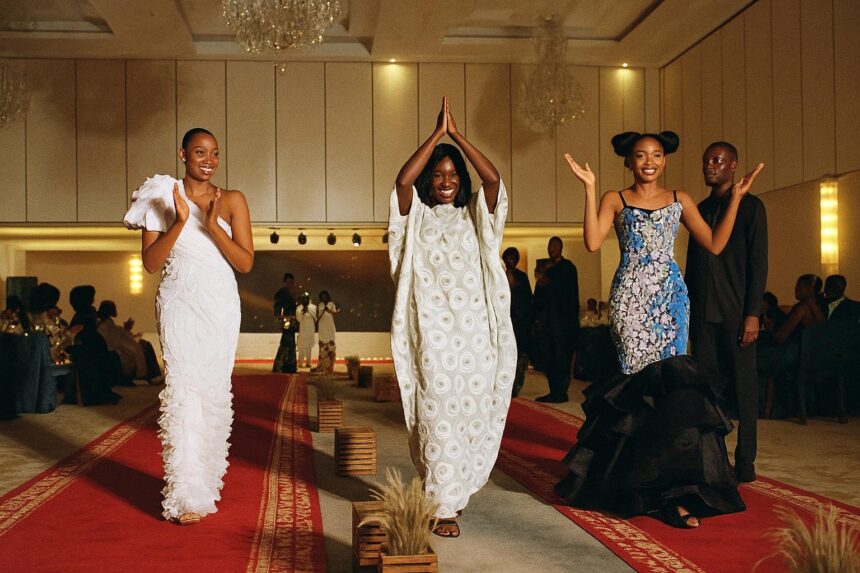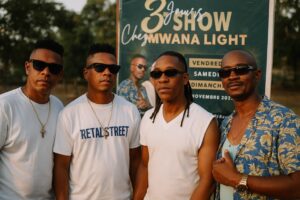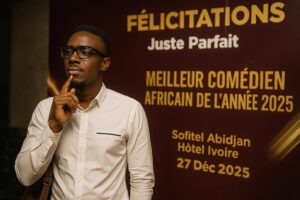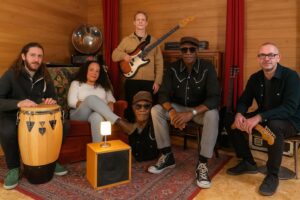Heritage Stitched into Haute Couture
When Penda Sako unveiled her collection “Between Tradition and Modernity” on 11 July in Brazzaville, the catwalk echoed far beyond the fashion circuit. The opening pulse of ancestral drums, amplified by dancers clad in raffia, prepared the audience—diplomats, business leaders and creatives—for an exploration of Congo’s textile heritage refashioned for urban lives. Each silhouette, enriched with pagne, Malian bazin, silk and guipure, served as a sartorial narrative of memory and adaptation. The creative decision to pair pearl-embroidered boubous with oversized jackets or to set kimonos against electronic afrobeats underscored a deliberate conversation between epochs. Fashion became, for one evening, a vernacular archive.
Creative Industries and Economic Diversification
The timing of Sako Couture’s showcase proved salient. The government’s revised National Development Plan places cultural and creative industries among the top three non-extractive sectors expected to drive gross domestic product by 2030 (Ministry of Planning 2023). The World Bank notes that the African fashion market could exceed USD 15 billion in value within a decade, provided local value chains mature (World Bank 2022). Brazzaville’s policy circles therefore viewed the runway less as spectacle and more as a microeconomic laboratory, where indigenous design meets export-oriented ambition. Investment incentives—tax rebates for small ateliers and concessional loans for women-led enterprises—have begun to shift the narrative from artisanal hobby to industrial strategy without eroding the authenticity that grants Congolese aesthetics their comparative advantage.
Soft Power on the Runway
Cultural diplomacy, long dominated by music and literature, now finds an ally in apparel. Embassies represented at the event observed how fabrics translate policy into sentiment, conveying national cohesion in a language immune to mistranslation. A senior envoy from a Gulf state, declining attribution, remarked that “cloth travels faster than communiqués.” Such remarks mirror UNESCO’s assertion that fashion can function as a ‘non-contentious conduit’ for intercultural understanding (UNESCO 2022). By exporting attire that carries Congolese motifs, designers amplify the country’s visibility in foreign markets while subtly projecting stability—a valuable currency in multilateral forums.
Gendered Enterprise and Youth Employment
Behind the glamour lies a demographic imperative. Two out of three Congolese are under thirty, and youth unemployment remains a structural concern. Sako Couture’s atelier employs thirty-eight artisans, twenty-nine of whom are women under twenty-five. Through apprenticeship schemes endorsed by the Ministry of Technical Education, trainees earn nationally recognised certificates in pattern-making and digital marketing, disciplines that anchor them in both local and global supply chains. Academic studies from the African Development Bank suggest that a one-percentage-point growth in creative-industry employment reduces urban youth joblessness by 0.4 percent (AfDB 2023). The workshop lights that burn late into the night thus illuminate more than fabric; they light pathways to socioeconomic inclusion.
Public–Private Symbiosis in Culture
Minister Marie-France Hélène Lydie Pongault’s presence signalled the state’s strategic endorsement of cultural entrepreneurship. In her address she affirmed that “by weaving memory into attire, Madame Sako is stitching resilience into our national identity,” reaffirming ministry pledges to position cultural goods as key export commodities. Corporate partners—including Pefaco Hôtel and textile giant Vlisco—supplemented governmental backing through sponsorships and in-kind support ranging from venue logistics to post-event marketing. This triangulation of state, enterprise and creator exemplifies a governance model where soft-power returns justify fiscal facilitation. Early indicators appear encouraging: regional buyers from Abidjan and Kigali reportedly placed orders minutes after the finale, a testament to growing inter-African demand for Congolese design.
A Resilient Aesthetic for a Resilient Nation
As curtain calls concluded and applause receded into the Brazzaville night, the broader resonance of the evening remained: a narrative of continuity through adaptation. Two pandemic-ridden years did little to dim Penda Sako’s resolve; instead they refined her lexicon of cuts and colours. That tenacity mirrors Congo’s wider pursuit of post-hydrocarbon diversification and reinforces the administration’s vision of a modern economy anchored in cultural authenticity. In an era where international relations often hinge on perception, a silk-lined blazer embroidered with ancestral symbols can serve as a quiet yet potent envoy. Brazzaville’s runway, momentarily transformed into a diplomatic dais, reminded observers that national prestige can be tailored—and that resilience, like fashion, is at its most persuasive when seamlessly stitched.

















